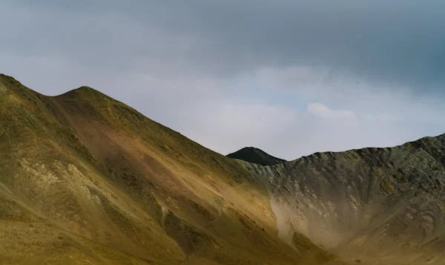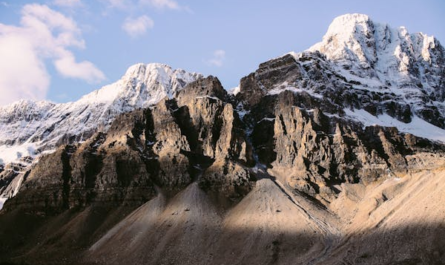Rigi is home to a delicate alpine ecosystem that faces numerous environmental threats. While many visitors marvel at its scenic beauty, few realize the silent struggle of its flora and fauna against climate change, habitat destruction, and human interference. This article explores little-known facts about Mount Rigi’s endangered alpine ecosystem and why conservation efforts are vital to preserving its natural heritage. The mountain’s unique microclimates support rare plant species and elusive wildlife, many of which are struggling to adapt to rapidly changing environmental conditions.
The effects of global warming are particularly evident in alpine regions like Mount Rigi. Rising temperatures have disrupted the growth cycles of native plants, forcing them to migrate to higher altitudes in search of suitable conditions. Iconic alpine flowers such as Edelweiss (Leontopodium alpinum) and the Rigi bellflower (Campanula rigi) face the risk of disappearing as shifting vegetation zones encroach upon their habitat. Additionally, diminishing snow cover affects soil moisture levels, altering water availability for both flora and fauna.
Wildlife on Mount Rigi is equally vulnerable. The European adder (Vipera berus), Alpine salamander (Salamandra atra), and the rare Black grouse (Tetrao tetrix) rely on stable ecosystems for survival, yet human encroachment and habitat fragmentation have reduced their populations. Larger mammals, such as the chamois (Rupicapra rupicapra) and red deer (Cervus elaphus), struggle to find sufficient food as grazing lands shrink due to invasive plant species and forest overgrowth.
Tourism, while economically beneficial, presents another challenge to Mount Rigi’s ecosystem. The influx of visitors, along with infrastructure developments like hiking trails, railways, and hotels, has led to soil erosion, trampling of delicate vegetation, and disturbance to wildlife. Over-tourism threatens the very landscapes that attract nature lovers in the first place. Moreover, traditional Swiss farming practices such as transhumance—where livestock was seasonally moved to maintain open meadows—have declined, leading to an overgrowth of shrubs that further alters the natural habitat.
Conservation efforts are crucial in mitigating these impacts and preserving Mount Rigi’s ecological integrity. Protected areas and sustainable tourism initiatives aim to minimize human disturbance while allowing visitors to experience the mountain’s beauty responsibly. Reforestation and habitat restoration projects help stabilize the land and support native wildlife, while scientific research and climate adaptation strategies, such as seed banking and species monitoring, provide data-driven solutions for long-term preservation.
The Unique Biodiversity of Mount Rigi
Mount Rigi boasts a variety of microclimates, supporting an impressive range of plant and animal species. Here are some lesser-known aspects of its biodiversity:
- Rare Alpine Flora
- The slopes of Mount Rigi are home to endemic plant species like the Rigi bellflower (Campanula rigi) and Alpine gentian (Gentiana acaulis). These plants have adapted to extreme weather conditions and nutrient-poor soils.
- Many alpine flowers, such as Edelweiss (Leontopodium alpinum), are disappearing due to rising temperatures and shifting vegetation zones.
- Elusive Wildlife
- Mount Rigi provides habitat to several endangered species, including the European adder (Vipera berus), Alpine salamander (Salamandra atra), and the rare Black grouse (Tetrao tetrix).
- The chamois (Rupicapra rupicapra), an agile mountain goat-antelope species, is increasingly struggling to find food due to shrinking grazing areas.
- Red deer (Cervus elaphus) populations have also been affected by human encroachment and deforestation.
Threats to Mount Rigi’s Alpine Ecosystem
Despite its scenic charm, Mount Rigi’s fragile ecosystem is under significant threat. The key challenges include:
- Climate Change and Rising Temperatures
- Global warming has led to an increase in temperatures in alpine regions, altering the growth patterns of native plants and pushing species to higher altitudes.
- Snow cover, crucial for many species’ survival, is diminishing, leading to changes in water availability and soil moisture content.
- Habitat Destruction Due to Tourism
- Mount Rigi is a popular tourist destination, with thousands of visitors flocking to its slopes year-round. Over-tourism has led to soil erosion, trampling of delicate alpine vegetation, and disturbance to wildlife.
- Infrastructure development, such as hotels, railways, and hiking trails, has fragmented natural habitats, reducing breeding grounds for many species.
- Loss of Traditional Land Use Practices
- Historically, Swiss farmers practiced transhumance, a seasonal movement of livestock that helped maintain alpine meadows. The decline of this practice has led to overgrowth of shrubs and the loss of open meadows necessary for certain plant species.
- Invasive plant species, such as Solidago canadensis (Canadian goldenrod), have begun to outcompete native alpine flora.
Conservation Efforts and Possible Solutions
Efforts are being made to mitigate the effects of human activities and climate change on Mount Rigi’s ecosystem. Conservation initiatives focus on several key strategies:
- Protected Areas and Sustainable Tourism
- Local conservation organizations and Swiss authorities have designated certain parts of Mount Rigi as protected areas to minimize human impact.
- Eco-tourism initiatives encourage responsible hiking and limit visitor numbers in sensitive areas.
- Reforestation and Habitat Restoration
- Planting native trees and restoring degraded alpine meadows can help stabilize the soil and provide shelter for wildlife.
- Farmers and environmental groups collaborate to reintroduce traditional grazing practices to maintain biodiversity.
- Scientific Monitoring and Climate Adaptation Strategies
- Researchers actively monitor temperature changes, plant migrations, and wildlife population dynamics to understand long-term ecological shifts.
- Climate adaptation strategies, such as seed banking and assisted migration of endangered plants, are being explored.
How You Can Help
Even as a visitor, there are ways to contribute to Mount Rigi’s conservation:
- Follow Leave-No-Trace Principles: Stay on marked trails, avoid picking plants, and take all trash with you.
- Support Local Conservation Groups: Donations and volunteer work with Swiss environmental organizations can make a difference.
- Choose Sustainable Tourism Options: Opt for eco-friendly accommodations and transportation, and respect wildlife habitats.
Mount Rigi boasts a remarkable biodiversity, supported by its diverse microclimates. Its slopes are home to rare alpine flora, including endemic species like the Rigi bellflower (Campanula rigi) and Alpine gentian (Gentiana acaulis), which have adapted to extreme weather and nutrient-poor soils. However, rising temperatures threaten delicate flowers such as Edelweiss (Leontopodium alpinum), causing shifts in vegetation zones. The mountain also provides habitat to elusive wildlife, including the endangered European adder (Vipera berus), Alpine salamander (Salamandra atra), and the rare Black grouse (Tetrao tetrix). Other species, such as the chamois (Rupicapra rupicapra) and red deer (Cervus elaphus), are struggling due to shrinking grazing areas and human encroachment.
Despite its scenic charm, Mount Rigi’s fragile ecosystem faces significant threats. Climate change and rising temperatures have altered native plant growth, reduced snow cover, and affected water availability. Additionally, increasing tourism has led to soil erosion, trampling of delicate vegetation, and habitat fragmentation due to infrastructure development. The decline of traditional land-use practices, like transhumance, has further contributed to habitat loss, while invasive species such as Canadian goldenrod (Solidago canadensis) outcompete native flora.
To counter these threats, conservation efforts focus on protecting key areas, promoting sustainable tourism, and restoring habitats. Swiss authorities and conservation groups have designated protected zones, encouraged responsible hiking, and implemented reforestation projects. Efforts to reintroduce traditional grazing help maintain biodiversity, while scientific monitoring and climate adaptation strategies, such as seed banking and assisted plant migration, provide long-term solutions.
Visitors can also play a role in preserving Mount Rigi’s ecosystem. By following Leave-No-Trace principles, staying on marked trails, and avoiding plant picking, they can minimize their impact. Supporting local conservation groups through donations or volunteering can further aid restoration efforts. Choosing sustainable tourism options, such as eco-friendly accommodations and transportation, helps ensure that Mount Rigi remains a haven for its unique biodiversity for generations to come.
Mount Rigi’s alpine ecosystem is a hidden treasure facing mounting ecological challenges. While it remains a paradise for nature lovers, it requires our collective efforts to ensure its survival for future generations. By understanding the fragility of this environment and supporting conservation initiatives, we can help preserve the Queen of the Mountains and its unique biodiversity.



